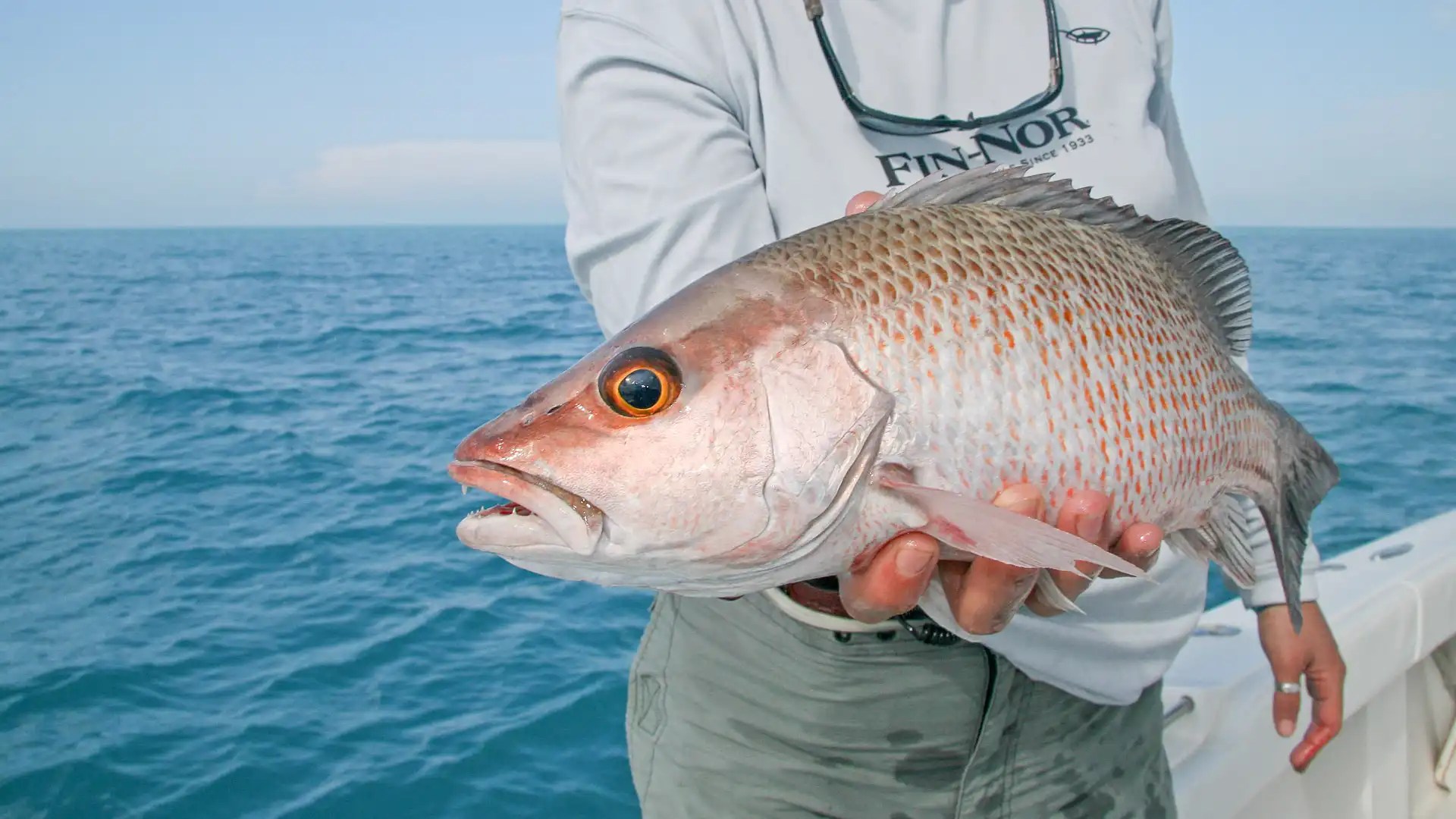
It’s a tricky question: “What’s your favorite saltwater fish?” I mean, do you go with a species you’ve caught most often, one you consider your personal best or possibly a bucket-lister?
No doubt, from fighting ability to table fare, the judging criteria are many, but if I had to pick one fish with the optimal mix of appealing attributes that practically anyone can enjoy, I’m going with the mangrove snapper.
I’ve caught a bunch, eaten many of them, and I always smile when I find one at the end of my line.
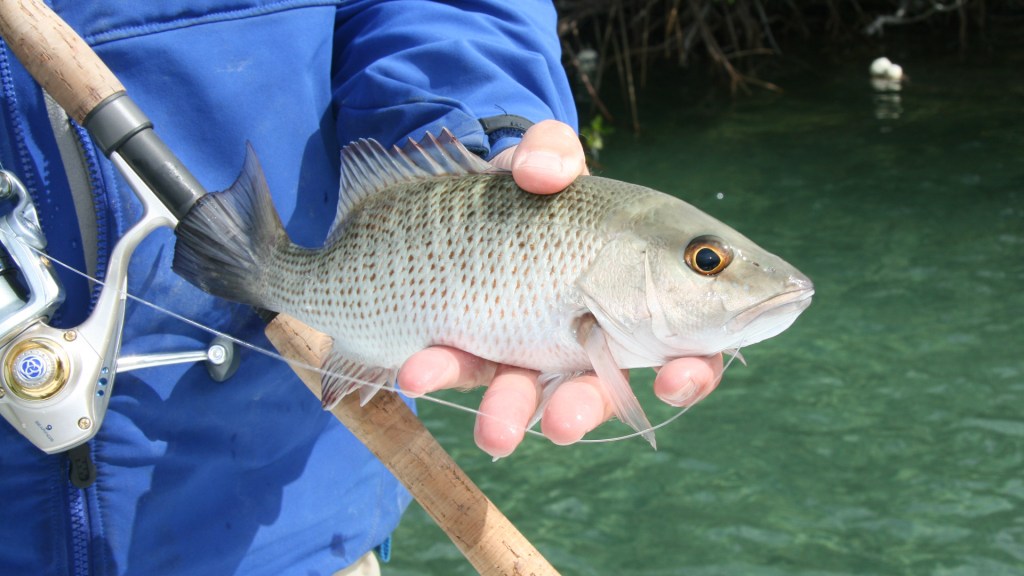
Meet the fish
Properly named gray snapper (Lutjanus griseus), this fish ranges from Massachusetts to South America and takes its name from the common nursery habitat amid mangrove swamps — wherever this habitat exists. While you may hear the term “black snapper” in the northern Gulf of Mexico (not to be confused with blackfin snapper), most simply call them mangroves or the whimsical nickname “mango.”
With grayish to light brown sides, mangroves have splotchy reddish vertical stripes along their flanks, two prominent canine teeth on the top jaw and smaller teeth along both jaws. Most distinctive is the dark stripe running from the snapper’s snout through the eye area and ending at the upper gill cover. These stripes intensify when mangroves are agitated or aggressively feeding.
In 2015, an angler caught the world-record mangrove — an 18-pound, 10-ounce beast — off the coast of Cocodrie, La., but that’s way bigger than the average fish.
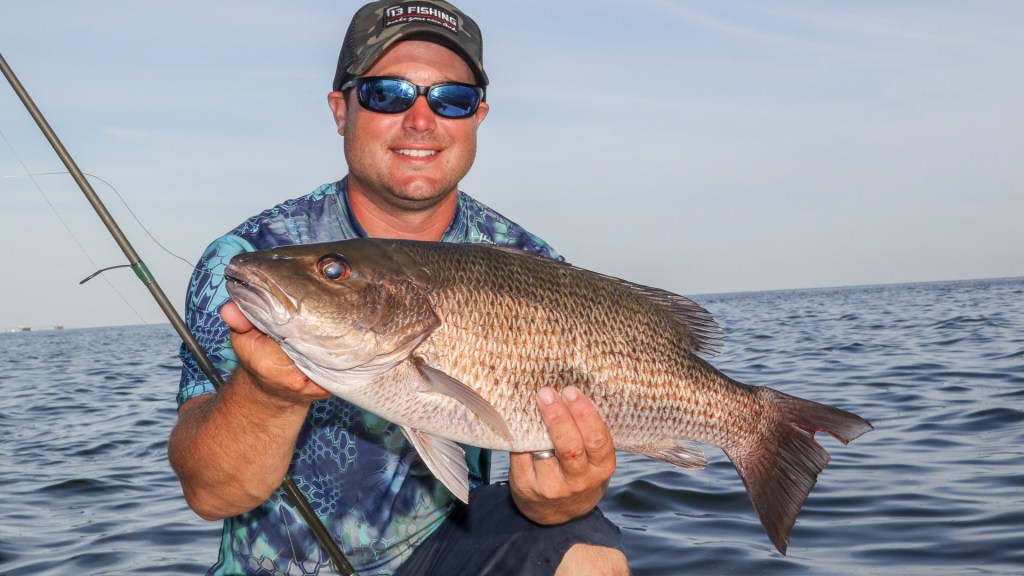
Offshore, I’ve personally caught them up to 10 pounds, with lots of 5- to 6-pounders. Inshore anglers typically call 3-pounders “big.”
Are there larger species to catch? Yes.
Are there more abundant and more cooperative fish? Yes, and yes.
However, for Southern coastal states, the mangrove snapper runs a pretty convincing campaign for the title of “most user-friendly fish.”
Accessibility: While fishing offshore from a charter boat or private vessel offers greater quality and quantity, inshore small boaters, paddlers and land-bound anglers will also enjoy plenty of mangrove snapper opportunities. You’ll often have to pick through a lot of undersized snapper to find a legal-size fish, but even the catch-and-release stuff is fun.
Aggression: Mangrove snapper can be a wary lot, but as long as you keep your distance and pay attention to rigging details (we’ll address that shortly), it doesn’t take much to talk them into biting. Once they do, you can expect a spirited fight, even from the little ones.
Regulations: It’s important to note that mangrove snapper are managed differently in federal waters than in state waters. Minimum sizes and daily bag limits will vary, so check your state’s regulations, along with the rules for federal waters (beyond 9 nautical miles in the Gulf and 3 nautical miles for the Atlantic).
That said, a 10-fish limit in federal waters and five for most state waters is plenty for a fine seafood dinner. Also, the minimum size of 12 inches (10 in some state waters) means it doesn’t take much to make a keeper.
Yield: This refers to the amount of usable meat you get from one fish. Snapper, in general, are considered a prized food fish, and mangroves are no exception. From this writer’s experience, one legal-size mangrove snapper, properly cleaned, yields enough meat for two moderate-size fish sandwiches.
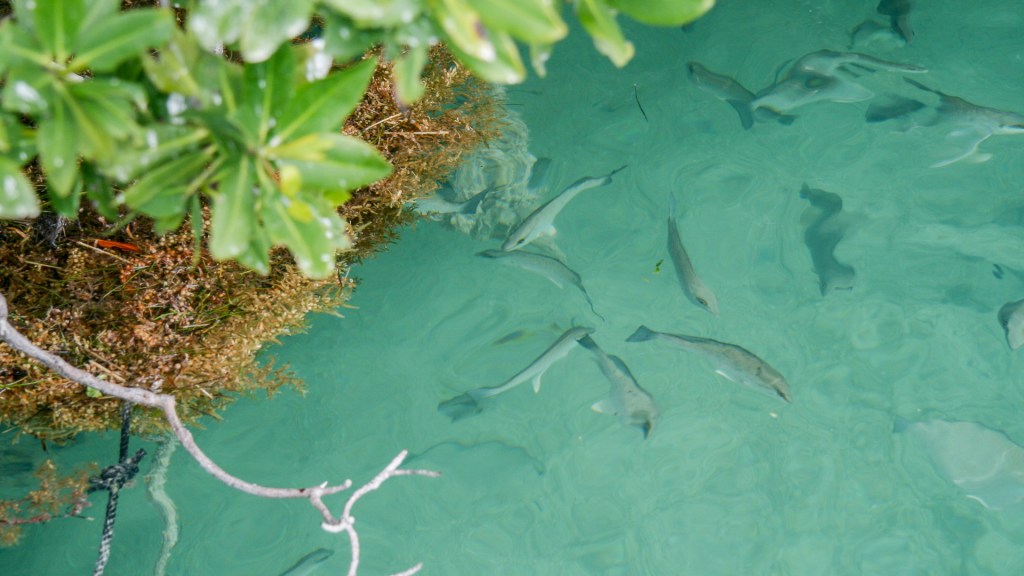
Where to find ’em
Boaters fare best by targeting reefs and rock piles from bays to offshore ranges. Parking directly over the target works OK in slow to moderate current, but when the water’s moving swiftly, you’ll want to anchor up current and drift baits back to the fish or use bottom rigs that descend at an angle with the flowing water so they hit the target.
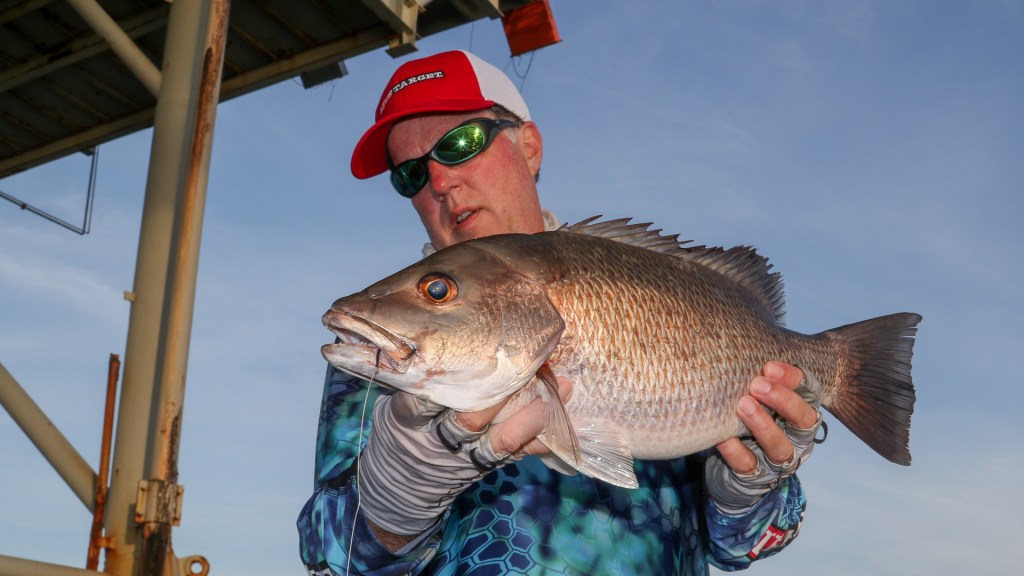
Look around and you’ll find shallower reefs, rock piles and wrecks scattered throughout bays and nearshore zones, while Gulf Coast waters from Alabama to Texas also hold snapper-friendly drilling rigs. All good options, but considering the common denominator here is hard structure, it doesn’t take long to realize that inshore piers, bridges, seawalls and jetties also fit the bill.
In any habitat scenario, snapper rarely pass up an available meal, but they prefer tidal movement, so expect less activity on the slack-tide stages. If you can tough it out through the lulls, you’ll fare better once the water starts moving again.
Mangroves seem most active when new and full moon tides bring swift currents that deliver bountiful forage opportunities. The only problem is that a screaming tide makes it hard to target the structure-oriented snapper without going so heavy that your rig spooks the fish.
How to catch ’em
Bucktail jigs occasionally fool larger snapper, and I’ve also seen mangroves caught on shallow-diving plugs and topwaters. However, most mangrove snapper anglers use natural baits.
In deeper spots, experienced anglers typically start with dead baits like frozen sardines or squid (available at most bait shops) because the pungent scent will quickly attract attention. Basic rule of bottom fishing: Get the smaller “reef rats” buzzing and you’ll attract larger predators.
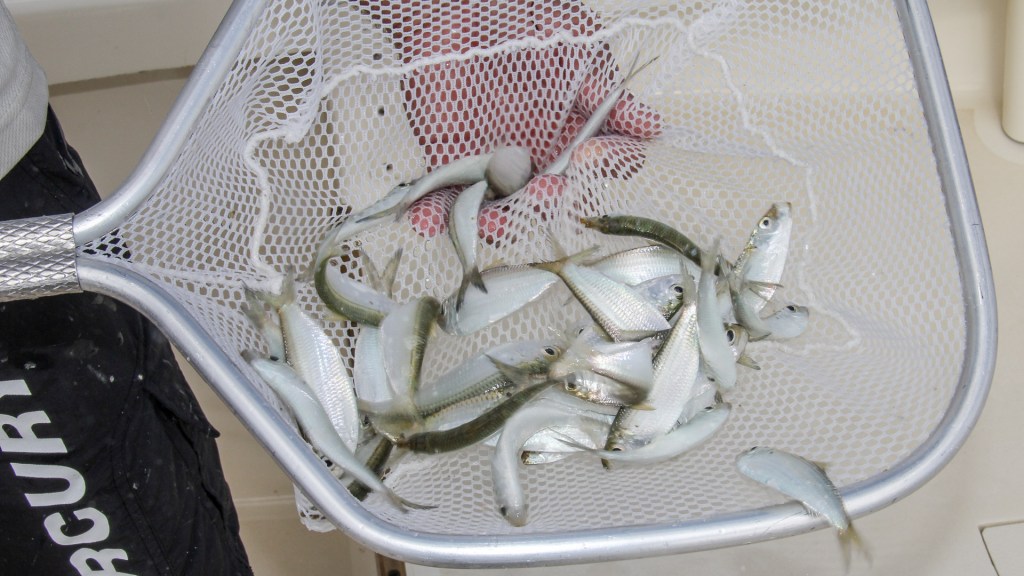
Once the snapper become active, switching to live bait often tempts the bigger fish. If you’re handy with a cast net, catching scaled sardines (“whitebait”), threadfin herring (“greenbacks”), pinfish or menhaden (“pogies”) will give you plenty of ammo for a day of offshore or inshore fun. Of course, a bucket of live shrimp is never a bad idea.
For deep offshore work, stout conventional tackle is a good bet, as you could just as easily hook a big grouper as a more manageable mangrove snapper. Heavy spinning outfits with braided main line linked to a low-visibility fluorocarbon leader (via swivel or a double-uni knot) will handle your larger offshore fish, while providing a higher level of sport.
Inshore, 7-foot medium to medium-heavy spinning outfits with lighter braid and fluorocarbon pairings stand up to most anything you’ll hook without the fatigue of heavier boat tackle. Common rigging options include the following.
Slip Sinker: Slide an egg-shaped sinker onto your main line, tie on a swivel, then add your leader to the swivel’s opposite side. This is an effective rig for boat fishing, but the dangling form is pretty snag-prone if you’re trying to cast bait under piers, bridges or docks.
For this and all natural bait rigs, circle hooks are most effective, as they require no hook set — just reel tight and the hook’s inward-facing point firmly grabs the outer jaw edge, where it’s easier to remove.
Knocker Rig: This streamlined option works fine offshore, but it’s particularly effective for land-based efforts. Rig your leader to the main line, slide a slip sinker onto the leader and then tie on the hook. This way, the weight slides (knocks) against the hook for a tight profile when casting or dropping.
On the bottom, the leader freely slides through the weight, so a snapper won’t immediately feel the weight’s resistance. Kind of a best-of-both-worlds rig, the knocker keeps the presentations clean and efficient without spooking the fish.
Double Dropper: This popular pier and jetty rig uses a pair of dropper loops to space out the baits and probe different depths. Tie on a long leader to allow sufficient rigging space, form one loop about 14 inches below the line-leader connection, make a double overhand knot, pull it snug, then repeat for a second loop 10 to 12 inches below.
Mount your hook by squeezing the loop’s outer edge, pushing it through the hook eye (back to front), passing the loop over the hook and snugging it against the eye’s back side. This knotless, tension-based connection enables you to quickly change hook size by loosening the loop, sliding it off one hook and then onto another.
If your leader’s too thick to pass through the hook eye when doubled for a loop, you can always form the dropper loops with the hook already on the leader. Simply pass the leader through the hook eye, form a loop with the hook dangling in the center, then make a double overhand knot by carefully passing the loop and hook through both steps.
Jighead: One of the best ways to fish a live shrimp, the jig keeps your weight and hook in one compact form that casts well and allows you to count down your bait in a measured pattern for mangroves suspending in the water column. (This may happen over offshore structures or next to bridge and pier pilings.)
Two main options here: First, pinch off the tail fins and thread the jig’s hook into the shrimp’s tail and bring it out where the hook’s bend starts, so the point rides under the shrimp. For the second option, hold the jighead between the shrimp’s tail fins, measure the spot where the bend starts, insert the point here and run it through the top of the shrimp’s tail.

Coax and capture
Whatever bait or rig you use, jump-start the action by chumming the snapper into a frenzy. Tossing fingernail-size chunks of cut bait into the target zone works, but nothing beats a frozen chum block. Hung from a boat cleat, or suspended from a bridge or pier, the solid chunk of ground baitfish and fish oils melts in the waves to release a smelly trail of appetizers that’ll lead fish to your bait.
When a snapper bites, patience and swift response mark the winning formula, as mangroves typically peck, peck, peck at a bait before committing. You don’t want to yank the bait away from the fish, but you also don’t want to miss any opportunity to connect.
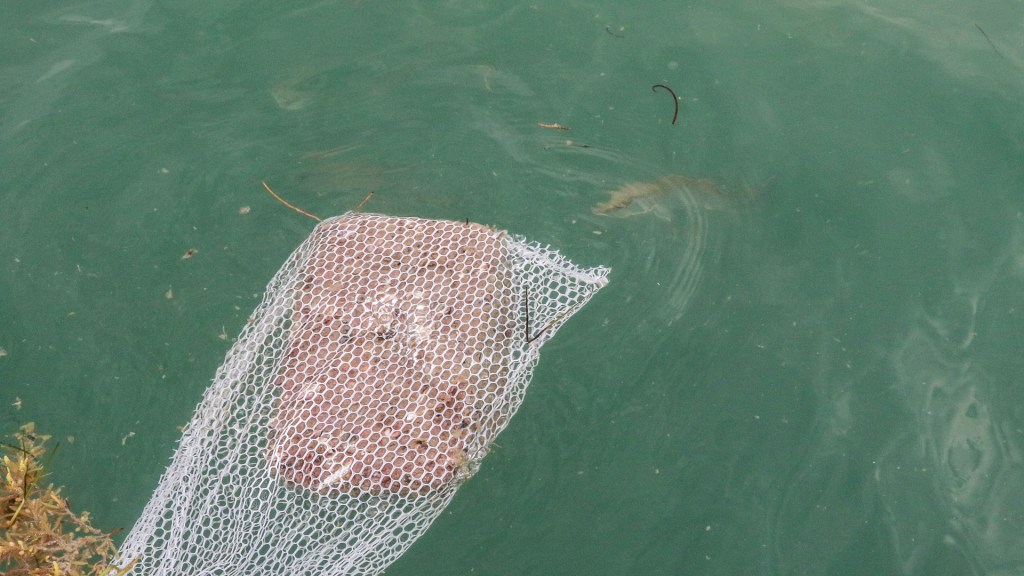
Best bet is to keep a steady hand and wait for a serious bite to bend your rod tip. Trust those circle hooks to do the work for you, and when your line tightens, simply reel into the fish, raise the rod tip and maintain constant pressure.
For best table fare, get your keepers on ice ASAP, but protect your fingers during the process. Mangrove snapper are notorious for tightly clamping onto a hook until wayward fingers venture too close, then — BAM! Lightning-fast jaws plus sharp teeth equal one painful lesson.
A long-handle hook remover or needle nose pliers will help you safely unhook these devious fish, but if you catch a keeper with a particularly bad temperament, just drop the fish on ice, cut the leader and remove the hardware later — like right before a delicious seafood dinner.





